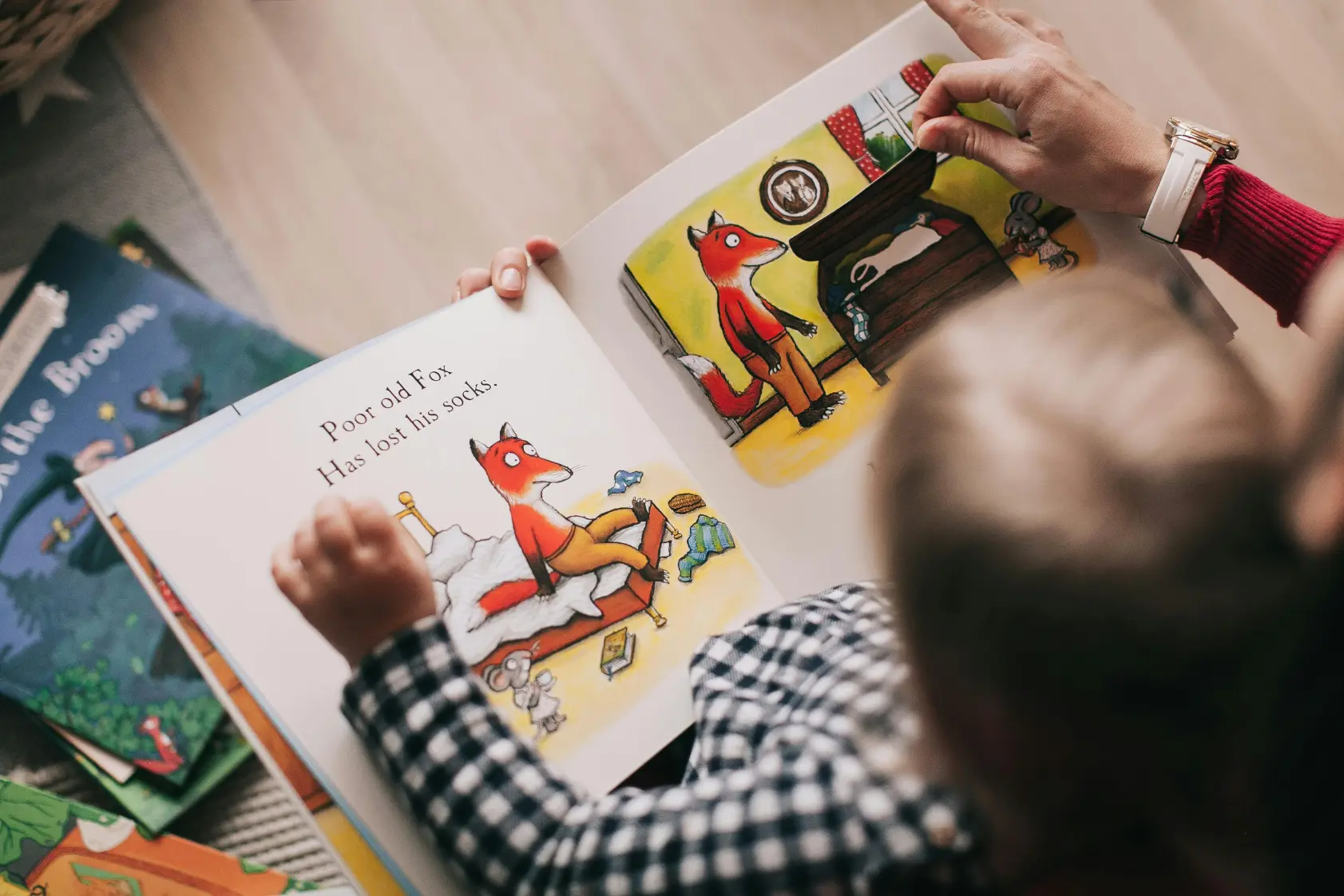Helping Autistic Children Learn Hygiene Skills: A Guide for Parents
.jpg)
Practicing good hygiene is an important part of staying healthy, feeling comfortable, and gaining independence. For children with autism, developing these skills can also help them feel more confident in social situations, build friendships, and be more accepted by peers.
However, learning hygiene skills can be tough for an autistic child. Some children with autism may struggle with fine motor skills, like holding a toothbrush, while others may have trouble following step-by-step instructions. Some may find it difficult to communicate their needs, like telling someone they need to use the bathroom. Sensory sensitivities can also make things like the feel of soap, the sound of a running faucet, or the smell of shampoo overwhelming.
The good news? With patience, practice, and the right evidence-based applied behavior analysis (ABA) therapy techniques, learning hygiene skills can be easier—and even fun!
Step 1: Consider your child’s development
It’s important to consider your child’s age and developmental abilities when teaching hygiene skills. Most children start learning self-care routines between the ages of 2 and 6, such as using the bathroom, brushing their teeth, and getting dressed. Understanding what your child can already do—and what they still need to learn—can help you teach them more effectively.
Before introducing a new self-care skill, ask yourself:
- What skills does my child already have that I can build on?
- Do they have the motor skills and coordination needed to try this task?
- Can they follow instructions, routines, or visual prompts?
- Are there any sensory challenges that might make this task uncomfortable or overwhelming?
- What supports will help them feel the most confident?
These questions can help you decide where to start and what to focus on. For example, if your child needs to learn body awareness before they can start a full hygiene routine, begin there. It's also helpful to prioritize skills based on what’s most relevant to their daily life and interactions with others.
Step 2: Break it down
Learning new skills can feel overwhelming, but breaking them into smaller steps makes them easier to master. A part of ABA therapy involves breaking down big tasks into smaller, more manageable steps. For example, instead of just saying, “Brush your teeth,” parents can break it into simple steps like:
- Get your toothbrush.
- Put toothpaste on the brush.
- Brush the top teeth.
- Brush the bottom teeth.
- Spit into the sink.
- Rinse your mouth.
- Rinse the toothbrush and put it away.
Along the way, give your child lots of encouragement and praise!
Step 3: Model hygiene tasks
Every child learns differently, and many children with autism may not respond right away to just one teaching method. Combining different ways of teaching can be especially helpful, so using a mix of verbal instructions, visual supports, and hands-on modeling can make learning more effective.
Instead of only giving verbal directions, show your child how to complete hygiene tasks by doing them together. For example, if you're teaching handwashing, wash your hands alongside your child and clearly demonstrate each step: turning on the water, applying soap, scrubbing, rinsing, and drying. Use simple, consistent language and repeat the steps the same way each time.
You can also try:
- Video modeling: Short videos showing someone completing a task (like brushing teeth or washing hands) can help your child understand what to expect. If your child enjoys watching videos, record yourself completing the routine so they can watch it before practicing.
- Books and stories: Reading books about hygiene can help your child understand why these tasks matter and what each step looks like. Choose books with pictures and simple language, or create your own story that includes your child’s name and routine.
Step 4: Use visual supports
Visual supports are a powerful tool for teaching hygiene skills to children with autism. Many children learn best through visual cues rather than verbal instructions, and having a clear, predictable guide can make routines easier to follow.
For example, a simple chart for washing hands might look like:
[image of visual schedule - handwashing]
You can also use:
- Laminated checklists your child can mark off as they complete each step
- Illustrated posters displayed in the bathroom or bedroom as reminders
- Digital apps that offer step-by-step visual instructions and encouragement
- Social stories are short, personalized stories that explain routines in a clear and supportive way. These can help your child understand why hygiene tasks are important and what to expect when doing them.
Step 5: Keep it consistent
Many children with autism thrive on routines, and having a predictable schedule for hygiene tasks can make learning easier and reduce resistance to these tasks. Try to make hygiene activities a regular part of your daily routine, such as brushing your teeth every morning and night, washing your hands before meals, or taking a bath before bedtime. Sticking to a set routine helps hygiene tasks become second nature over time.
It’s also important for everyone involved in your child’s care—parents, teachers, ABA therapists, and other caregivers—to use the same approach. Consistency in expectations, instructions, and rewards helps reinforce learning and can prevent confusion. If different people teach hygiene skills in other ways, it may make it harder for your child to grasp the routine.
Step 6: Celebrate every win
Every small success is worth celebrating! Whether your child washes their hands without help or brushes their teeth for a full two minutes, show them how proud you are!
Positive reinforcement for completing hygiene tasks, such as clapping, giving a high-five, or offering a small reward, can help keep them motivated. Recognizing their progress, even in small steps, encourages them to keep learning.
How Action Behavior Centers (ABC) can help
Teaching hygiene skills to children with autism takes time, patience, and creativity, but with the right support, it’s totally possible! At Action Behavior Centers, we use evidence-based ABA therapy to help children learn skills for independence in a way that feels natural and achievable. Every small step can help prepare them for the future.
Our clinical experts work closely with families to set meaningful, individualized goals for their child's ABA treatment. With encouragement, consistency, and the right strategies, your child can gain the skills they need to reach milestone moments.
At Action Behavior Centers (ABC), we help children diagnosed with autism spectrum disorder (ASD) reach milestone moments. Compassionate care is at the heart of everything we do, and our highly trained clinicians deliver evidence-based applied behavior analysis (ABA) therapy tailored to each child’s unique needs.
Our autism services include diagnostic support, 1:1 individualized care, parent training, school readiness programs, and Early Intensive Behavioral Intervention (EIBI) across hundreds of centers in Arizona, Colorado, Illinois, Minnesota, North Carolina, and Texas. Because no family should have to wait for help, ABC offers immediate access to care. Contact us today to get started.


Join our newsletter
Stay in the loop with tips, events, and resources for families and clinicians. We’ll email you about once a quarter, and you can unsubscribe anytime.
More posts on:

Car Ride Safety Tips for Children with Autism: Advice from BCBAs
Discover strategies to make car rides safer and less stressful for children with autism. Learn how BCBAs at Action Behavior Centers support families with routines, sensory-friendly tips, and seatbelt safety during National Child Passenger Safety Week.

Top 45 Autism Blogs: Exploring Autism Resources for Parents
Today, there are more resources than ever for families of children with autism spectrum disorder (ASD), and blogs are a great place to start. Whether you're a parent, educator, or person with autism, these blogs offer real-life advice from other families and expert advice from clinicians.
Your child is accepted here
At Action Behavior Centers, we provide applied behavior analysis (ABA) therapy, a gold standard approach for helping children with autism. Our evidence-based therapies are carefully crafted to meet your child’s needs and unlock their strengths and abilities.



